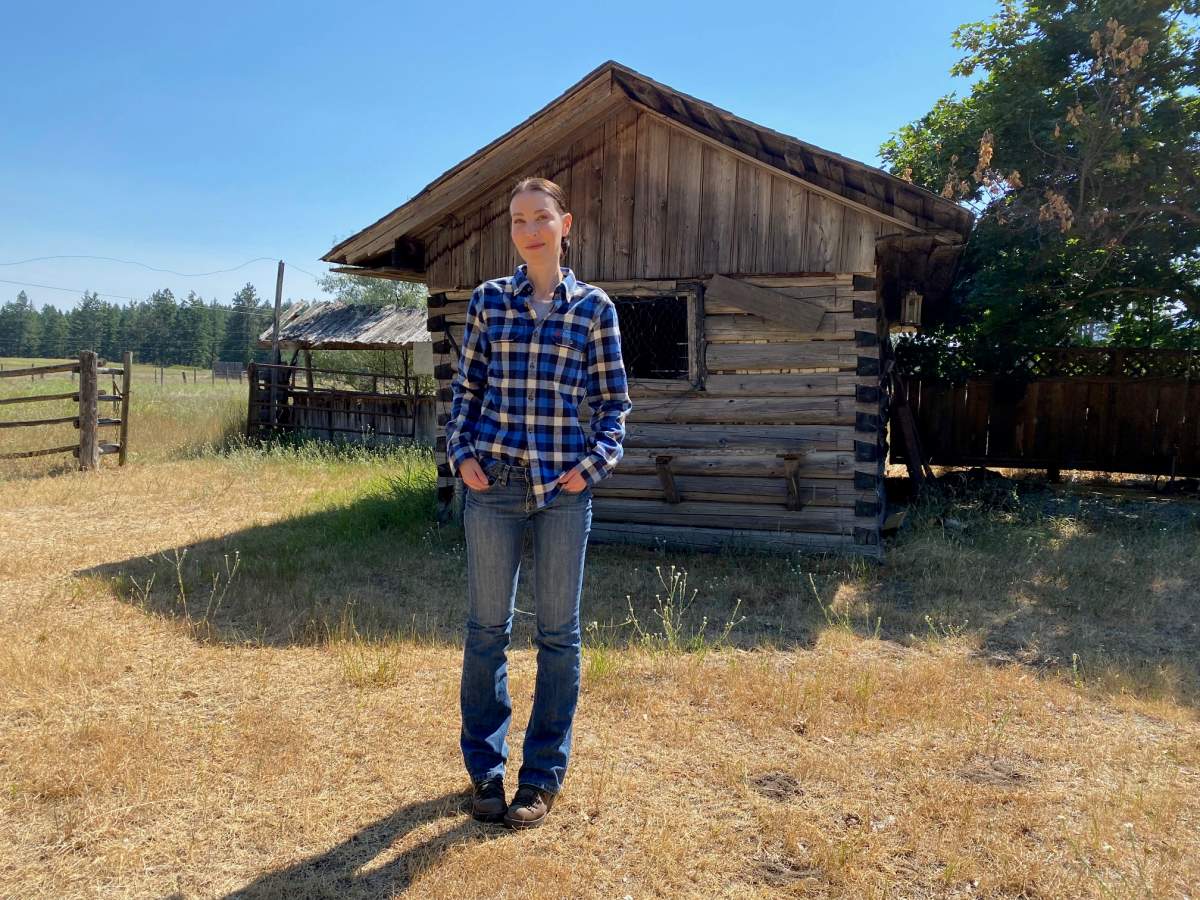Kerry K. Taylor, a financial writer based in B.C.’s Interior, is not new to the threat of wildfires. Living on a farm about a 40-minute drive from Vernon, she says she’s drawn up evacuation plans a few times before.

This time, though, is different, she says.
This is the year Taylor, the writer behind the popular personal finance site Squawkfox.com, actually rented a storage locker in town and filled it up with her business equipment, a few fancy articles of clothing, some photos, pictures and other items it of sentimental value that would be hard to replace.
It’s “stuff that I’d like to keep and stuff that’s not important enough to evacuate with in a car,” she says.
As wildfires in British Columbia become more frequent and more destructive, Taylor, who has for years been educating Canadians on topics like managing cash flow or saving for retirement, is now focusing on a new, far more dire aspect of personal finance: how to limit the financial fallout of a climate disaster.
Whether it’s wildfires, flooding or another natural catastrophe, having a plan for the worst-case scenario is becoming an essential part of financial planning for Canadians who live in high-risk areas, she says.
“It’s really important to have a preparedness plan in place,” she says. “It’s your playbook for how you’re going to prepare during, before … and after a crisis.”

Here’s what Taylor’s own plan looks like:
Before the crisis
The key to minimizing the financial hit from a potential climate calamity, Taylor says, is in the old adage: hope for the best, prepare for the worst.
The more you can do ahead of time and during the risk off-season, when you’re calm and thinking clearly, the better, she says. This the ideal time to review your home insurance to make sure you have adequate coverage.

Get weekly money news
“It’s a good idea to look at your condo, your renters’ or your homeowners’ plan every year in the off-season because insurance companies are loath to update these policies when a crisis is imminent,” Taylor says.

While you’re at it, take out your phone and take a video of everything in your house, Taylor advises. If you ever do need to replace the contents of your home, you can turn to the video both as proof for the insurance company and to help you remember what to include in the claim.
“Open your pantries, open your closets, open your drawers and film it so that you can jog your memory and know what books are on your bookshelf and what clothes were in your dresser beforehand,” Taylor says.
If the threat becomes more imminent, it’s a good idea to move some of your belongings away from your home. That’s when something like a storage unit may come into pay.
Taylor says she rented a five-foot-wide and five-foot-long unit in June for around $100 a month. Many others seemed to have had the same idea. Virtually every storage locker in Vernon is now taken, according to Taylor.
“People in British Columbia are literally packed up,” she says.
Alternatively, or in addition to the locker, you can also see if you can drop a couple of boxes’ worth of your belongings with friends or family who live in lower-risk areas, Taylor says.
Taylor says she’s also keeping some jewelry and copies of important financial and legal documents in a safe deposit box.

A 'Go-Bag'
If you’re facing the possibility of being evacuated at a moment’s notice, you also need a “go-bag.” Taylor says hers includes a change of clothes, water, snacks, medications, financial documents, phone chargers, family and emergency contacts as well as the number of her insurance claim adjuster.
She also has $200 in her wallet because “a fire situation is all low tech,” she says. Old-fashioned paper money comes in handy if you can’t use your debit and credit cards.
Taylor’s nine-year-old daughter also has her own bag ready to go, she adds.
According to the B.C. government, the contents of a go-bag should include:
- Food (ready to eat) and water
- Phone charger and battery bank
- Small battery-powered or hand-crank radio
- Battery-powered or hand-crank flashlight
- Extra batteries
- Small first-aid kit and personal medications
- Personal toiletries and items, such as an extra pair of glasses or contact lenses
- Copy of your emergency plan, copies of important documents, such as insurance papers
- Cash in small bills
- Local map with your family meeting place identified
- Seasonal clothing and an emergency blanket
- Pen and notepad
- Whistle

Rehearsal
When you’ve stored away some of your belongings and packed your grab-and-go kit, it’s time to rehearse. Practicing exactly how you’d run out the door, load the car and take off is essential both so that you can move quickly in a real emergency when emotions run high and to help you realize whether there’s anything you forgot to plan for, Taylor says.
Your evacuation plan should include any kids, seniors and pets in your life, she adds. In addition to her immediate family, Taylor’s escape route also includes picking up her 87-year-old father-in-law, who requires a wheelchair.
“We’ve practiced evacuating so we know exactly where to put what bag in the care … so there’ll be less stress and anxiety about getting the pets in there, getting the kid in there, getting my father-in-law in there,” she says.
Of course, you’ll also need a fuelled-up car.
Preparation, Taylor says, can make all the difference.
“I’ve been trying to get people to save for retirement for decades,” she says. But if your home could be destroyed by a fire, flood, hurricane or other disaster, planning ahead is just as important, she says.
“You have to think about it. You have to practice. You have to be ready.”








Comments